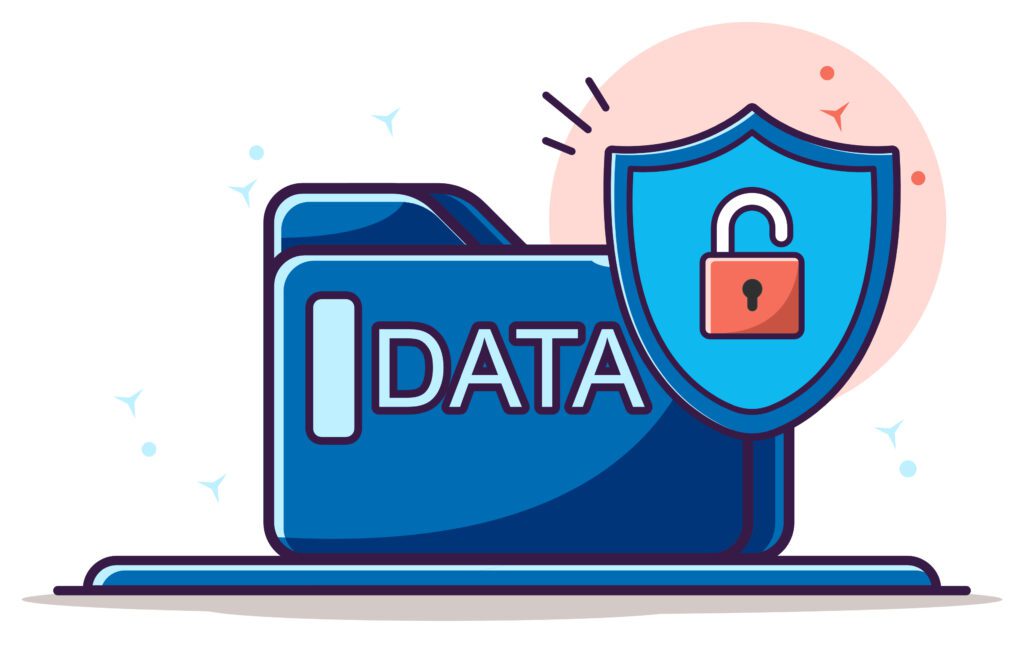
Guide you in your DLP research
Considering the large volumes and different types of data an organisation generates, stores, sends and receives on a daily basis, the probability of a data breach is very high. Add to this the numerous threats to data, and data loss prevention becomes an even greater challenge.
The aim of this page is to answer all your questions about DLP, and to help you with your research.


External threats to data come in a myriad of forms: advanced persistent threats, malicious code, snooping, and other attempts to gain unauthorised access to data. While external threats are an issue, data loss due to internal threats is also a significant concern. Loss of internal data can be malicious, when a disgruntled employee copies sensitive data onto a USB drive, or it can result from negligence due to an honest mistake, such as sending a client list to a partner commercial who should not have had access to it.
Strengthening global regulations are also driving the growing adoption of DLP solutions. Laws that require disclosure of customer data breaches, compliance with government and industry regulations, as well as regulations such as the European General Data Protection Regulation (GDPR), affect organisations of all sizes, in all areas. vertical sectors.

Data Loss Prevention (DLP) solutions are generally software or a set of technologies that provide data protection, monitoring and management to help organisations prevent information sharing sensitive. These solutions are used to protect data at rest, in use and in motion. With the need to share information comes the risk of exposing the wrong content. Files holding confidential information, whether visible in the file body or hidden in its metadata, may be mistakenly shared with unauthorised recipients. Likewise, receiving files from vendors or partners can open the door to embedded malware – external threats hidden within standard file transfers.
DLP tools are content-aware, meaning these solutions can understand the content of the information that is being shared and protect it.
Data loss prevention technology is an initiative-taking approach to securing critical information without interrupting daily business productivity.
We can distinguish several types of Data Loss Prevention solutions on the market.

These different approaches can be used in a complementary manner to provide comprehensive data protection within an organisation. DLP solutions can be deployed individually or combined depending on the organisation’s specific security needs.
There is network based DLP monitoring traffic for sensitive data. These solutions can detect and prevent unauthorised transmission of data over the network. They then make it possible to implement policies defined by the organisation or the user to control the flow and use of data thanks to rules specific to data communication.
Content-based DLP solutions scan data and files for predefined patterns that show a possible leak of sensitive information. They can also use automatic classification techniques to identify sensitive data.
Storage-centric Data Loss Prevention focuses on protecting data stored in locations such as databases, file servers, and content management systems. These software monitor and control access to stored sensitive data.
DLP leverages endpoints that protect data at end devices like laptops, desktops, and removable storage devices. These tools can monitor and control data activities on these devices.
DLP solutions implement various mechanisms to identify, monitor and control the transfer of sensitive data. Here are some of the common features of DLP solutions:

Analysing data to identify sensitive information based on predefined patterns, rules, signatures, or other pattern detection methods.

Regulates access to sensitive data based on authorisations defined by security policies.

Monitors user actions to detect suspicious or unauthorised behaviour, such as attempted mass data transfer.

Protects sensitive data by encrypting it, often when it is in transit or at rest, to ensure it is not accessible to unauthorised individuals.

Actively blocks or restricts the egress of sensitive data, whether through the network, end devices, or other channels.

Defines and enforces security policies to determine how sensitive data should be treated and protected.
DLP solutions can be implemented at the network, endpoint, storage and cloud levels, as seen above depending on the specific needs of the organisation. By combining these approaches, businesses can strengthen their security and reduce the risks of losing sensitive data.

One of the main uses of DLP is to protect sensitive customer data. Companies collect and store a massive amount of personally identifiable information (PII), such as social security numbers, credit card information, and addresses. If this data falls into the wrong hands, it can be used for malicious purposes like identity theft or fraud. DLP allows businesses to detect and block attempts at unauthorised transfers of sensitive data, ensuring the confidentiality and security of customer information.
Internal data leaks pose a serious threat to businesses. This could be malicious employees trying to steal confidential information to sell to competitors or simple human errors that result in the unintentional disclosure of sensitive data. DLP can help prevent these leaks by monitoring and controlling user activities within the organisation. It can detect suspicious behaviour such as mass data downloads or unauthorised access to sensitive information, and take steps to immediately stop these actions, reducing the risk of internal data leaks.


A DLP solution is essential for any organisation that deals with sensitive data, especially those running in highly regulated industries such as defence, finance, government and healthcare.
Defensive DLP strategies are primarily driven by regulatory compliance and data privacy laws, which require organisations to maintain secure environments and always apply the proper level of protection to the data in question, regardless of either where they are located or how they are shared.
Many industries are subject to strict data protection regulations. For example, the European Union’s General Data Protection Regulation (GDPR) imposes obligations on companies that process personal data of EU citizens. DLP can help comply with these regulations by monitoring data flows. data, identifying sensitive data and enforcing appropriate security policies. It can also generate reports and audit logs to demonstrate compliance to regulators.
Intellectual property is a valuable asset for many businesses. This may include trade secrets, patents, product plans, algorithms or unique formulas that provide a competitive advantage. DLP can help leak sensitive information. It can also detect unusual behaviour or suspicious data transfer patterns, allowing businesses to take steps to prevent intellectual property theft.


Any incoming communication can pose a threat to an organisation and file exchange is no exception. Files received from third parties may contain malicious code embedded in a harmless document.
Combining Managed File Transfer (MFT) with Data Loss Prevention (DLP) strengthens the security of file transfers within an organisation. MFT, when coupled with DLP, offers an important level of security thanks to secure transfers and in-depth inspection of attachments to remove any threats or detection of sensitive data.
Uniting MFT with DLP creates a more holistic approach to managing file transfers, integrating security into every step of the process. This helps reduce the risks associated with loss of sensitive data while facilitating the secure sharing of information within the organisation.
Find out how it works with a demonstration.
We use cookies to optimise your experience & our services on the website. Nous utilisons des cookies pour optimiser votre expérience et nos services.
